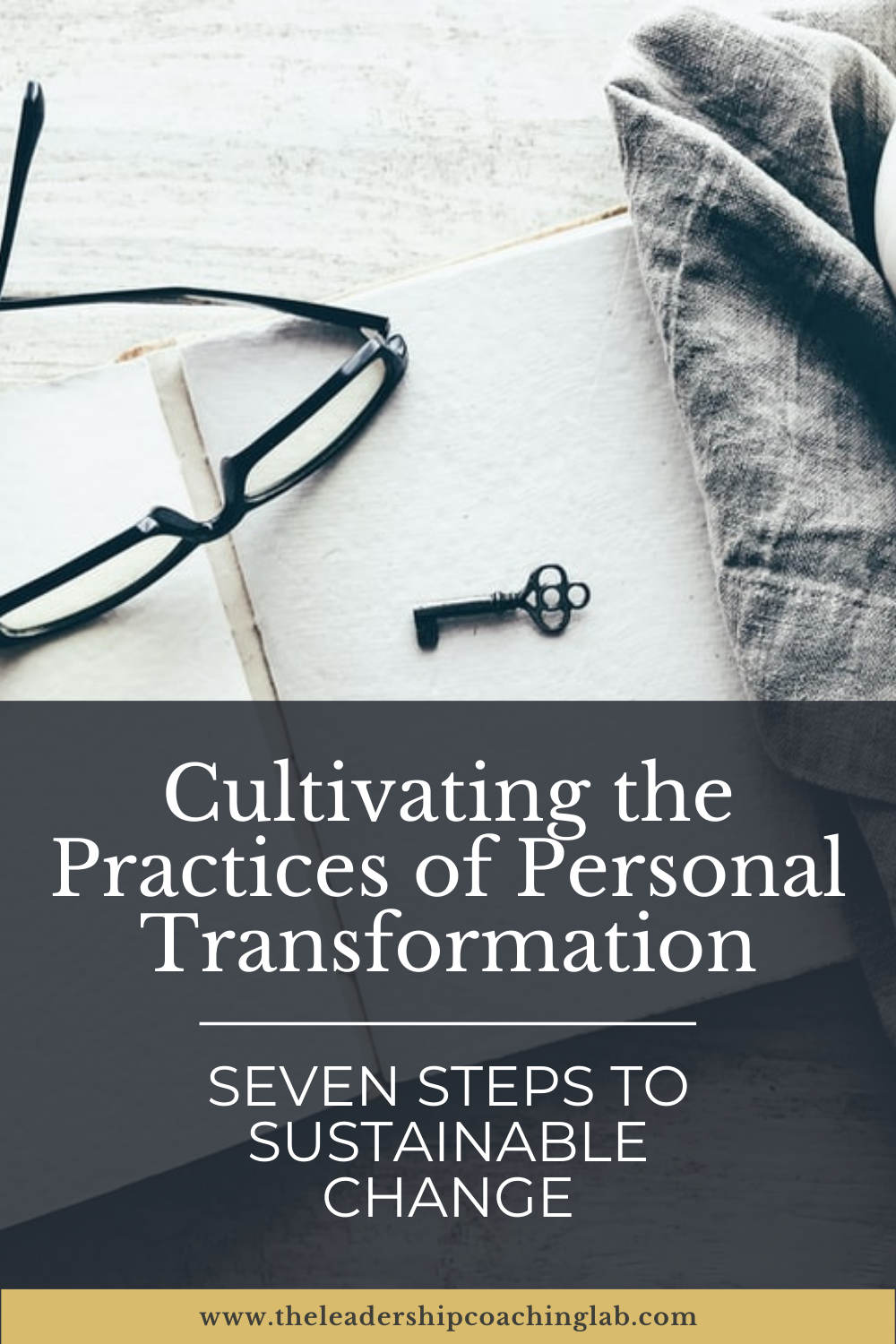Assess Your Mindset [Step 2]
How motivated are you to make a change?
Seven Steps to Sustainable Change: A Blog Series to Support Healthy Change & Leadership Development
I can recall countless visions that I have had for personal or professional growth, yet at some point my follow-through faltered. Consider, for example, the classic New Year’s resolutions that many of us set faithfully every year. Perhaps you start out with a new yoga mat, water bottle and running shoes. But three weeks later you're back to the old routines, tethered to your desk, and hunched over a keyboard, while your yoga mat gets buried in a corner of your office…
In cases like this, what happens to our resilient resolve? Was the initial inspiration flawed? Despite a surge of early enthusiasm, what is it that derails our motivation?
When you have a vision for personal growth or development, consider which of these strategies help to prepare your mindset for change.
Start With Why
Getting clear about your why can offer opportunity to identify the values embedded in your vision for change. A few years ago, I wanted to become more effective at making decisions. As a busy working mom, I found myself constantly mired in difficult decisions, about childcare, work commitments, and family life, and I was frequently stuck and unsure how to move forward.
This analysis paralysis had a cascading effect of negative consequences that left me continuously frustrated. On a surface level, I wanted to be less stressed and more efficient in my decision-making. Yet I recognized a deeper goal was to align my values with my decisions more consistently. I also wanted to serve and support other people from a place of confident decisiveness, a realization which strengthened my resolve. When we recognize our deeper why we are more likely to secure stronger motivation to fully implement our vision for change.
“Our visions are the world we imagine, the tangible results of what the world would look like if we spent every day in pursuit of our WHY.”
Asking “why” more than once is a strategy used by many leaders to yield valuable insights. Sakichi Toyoda, the Japanese founder of Toyoda Motors, first developed “The Five Whys” analysis as a method for determining the root cause of challenges within manufacturing processes.
Although “The Five Whys” approach was originally used to analyze problems, it can also be a useful tool for personal development. Seeking to discover the answer to more than one “why” can lead to greater clarity about your core values and provide more motivation for long-term change.
How does your vision for change align with your values?
Develop a Growth Mindset
Beyond clarifying your why, how do you view your capacity for growth and change? Carol Dweck, educational psychologist and researcher, explains how important our mindset is in our ability to fulfill our potential.
“The view you adopt for yourself profoundly affects the way you lead your life. It can determine whether you become the person you want to be and whether you accomplish the things you value. ”
Dweck explains how we all battle between two mindsets: a fixed mindset, which is the belief that your current capabilities are set and unchangeable. Within this mindset, criticism is seen as confirmation of one’s flaws and limitations. On the other hand, with a growth mindset we see our current capabilities as the starting point for development. With a growth mindset, constructive criticism is valued for the insight it offers for future growth.
Consider which of these attitudes or beliefs you hold towards your current personal or leadership change goals.
Fixed Mindset:
I have not been successful in the past, so why try again?
I don't have the skills to make this change effective.
I do not want to risk failing.
Growth Mindset:
I can try new strategies and learn from what works and what doesn't.
I can learn skills to improve my chances of success.
Failure can help me to learn.
Even if your default disposition is to embrace growth, you may have subtle doubts and reservations that emerge as unique triggers. When we encounter barriers, experience rejection, or are continually compared to others, insecurities may increase and inhibit our capacity for growth.
What strategies do you use to support and sustain a growth mindset?
“Our greatest glory is not in never falling, but in rising every time we fall.”
What beliefs are barriers to your growth?
Get the Complete Toolkit to Inspire Growth & Change
Get my free 60-page ebook featuring my 8-step process for growth and 80 powerful questions for coaching or reflection - designed for leaders, coaches, & personal growth enthusiasts.
You'll also join 2,000+ professionals who receive The Coaching Mindset, my newsletter for practical tips to inspire intentional growth and tools to take a coach approach.
References
Dweck, C. S. (2008). Mindset: The new psychology of success. Random House Digital, Inc.
Sinek, S. (2009). Start with why: How great leaders inspire everyone to take action. Penguin.





